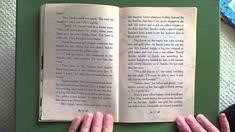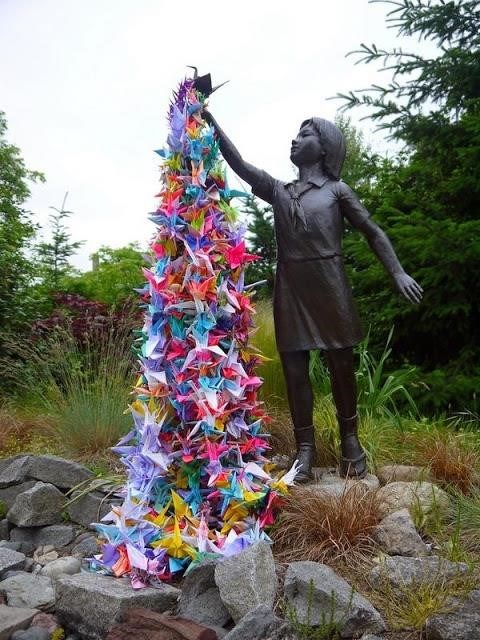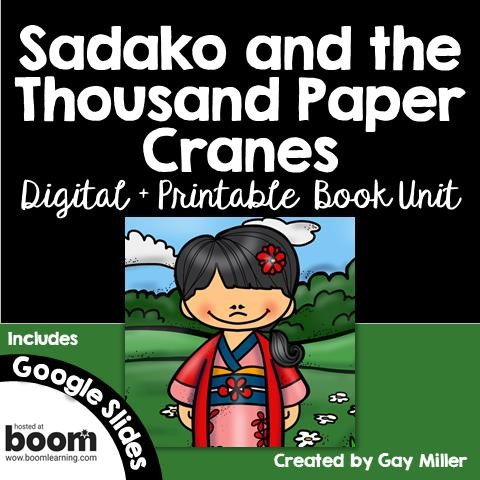Sadako and the Thousand Paper Cranes⁚ Book PDF Availability
Finding a legitimate PDF of “Sadako and the Thousand Paper Cranes” can be challenging. Check online bookstores or libraries for digital versions. Beware of unauthorized downloads; support the author by buying official copies.
Where to Find Digital Copies
Locating digital copies of “Sadako and the Thousand Paper Cranes” requires exploring various avenues. Reputable online bookstores like Amazon‚ Barnes & Noble‚ or Google Play Books often offer e-book versions. Public library systems frequently provide access to e-books through online portals; check your local library’s website. Additionally‚ some e-reader platforms‚ such as Kobo or Apple Books‚ might carry the title. Remember to verify the seller’s legitimacy before purchasing to avoid unauthorized copies. Exploring these options increases the chances of finding a legitimate digital version of the book.
Online Platforms Offering the Book
Numerous online platforms offer “Sadako and the Thousand Paper Cranes” in various formats. Major e-retailers such as Amazon Kindle‚ Apple Books‚ and Google Play Books are likely to have the ebook readily available for purchase or rental. Check dedicated ebook platforms like Kobo and Barnes & Noble Nook for potential availability. Subscription services‚ including Kindle Unlimited or similar programs‚ might also include the book in their catalogs. Remember to compare prices and formats before making a purchase. Additionally‚ some websites specialize in selling used books‚ offering potential cost savings. Exploring these diverse resources enhances your chances of discovering the book.
Legitimate Download Sources
Downloading “Sadako and the Thousand Paper Cranes” legally requires careful consideration of sources. Reputable online bookstores like Amazon‚ Barnes & Noble‚ and others offer authorized digital downloads in various formats (ePub‚ PDF‚ etc.). Libraries often provide access to ebooks through digital lending platforms; check your local library’s website or app. If you subscribe to an ebook subscription service‚ search their catalog; they often include the book. Always verify the source’s legitimacy to prevent downloading pirated copies‚ which harms authors and publishers. Purchase from official channels to support the creation and distribution of quality literature. Using authorized methods ensures you’re getting a safe and legal version of the book.

Sadako’s Story⁚ A True Account
Sadako Sasaki‚ a young girl‚ survived the Hiroshima bombing but later succumbed to leukemia. Her story of resilience and hope‚ symbolized by paper cranes‚ is a poignant testament to the enduring effects of war.
The Atomic Bombing of Hiroshima
On August 6‚ 1945‚ the United States dropped an atomic bomb on Hiroshima‚ Japan‚ instantly obliterating a significant portion of the city and causing widespread devastation. The blast’s destructive power was unprecedented‚ leaving behind a scene of utter chaos and unimaginable suffering. Thousands perished immediately‚ while countless others suffered severe injuries‚ burns‚ and long-term health problems due to radiation exposure. The bombing’s impact extended far beyond the immediate aftermath‚ leaving a lasting scar on the city and its people‚ a legacy of destruction that continues to resonate to this day. Sadako Sasaki‚ a young girl living in Hiroshima‚ experienced the bomb’s catastrophic effects firsthand‚ unknowingly beginning a journey intertwined with the city’s tragedy and enduring legacy.
Sadako’s Diagnosis and the Legend of the Cranes
Years after the bombing‚ in 1954‚ eleven-year-old Sadako Sasaki was diagnosed with leukemia‚ a disease linked to radiation exposure from the atomic bomb. Facing a life-threatening illness‚ she learned a Japanese legend⁚ folding one thousand origami paper cranes grants a wish. This ancient belief‚ steeped in tradition and hope‚ offered Sadako a powerful symbol and a tangible goal amidst her struggle. The legend became a beacon of hope in her fight against leukemia‚ transforming a traditional craft into a deeply personal and symbolic act of perseverance. The paper crane‚ a symbol of peace and good fortune‚ took on new significance as Sadako embarked on her determined quest.
Her Struggle and Perseverance
Despite her weakening body and the relentless progression of leukemia‚ Sadako’s spirit remained unbroken. She began folding cranes‚ each tiny fold a testament to her unwavering hope and determination. The task was physically demanding‚ her small hands growing weaker with each passing day. Yet‚ she persisted‚ driven by the legend and the desire to fulfill her wish for recovery. Friends and family rallied around her‚ helping to collect paper and offering encouragement. Sadako’s unwavering focus on the task became a symbol of her strength and resilience in the face of immense adversity. Her story exemplifies the power of hope and the human spirit’s capacity to endure.
The Symbolism of the Paper Cranes
In Sadako’s story‚ the paper cranes represent hope for healing‚ a wish for recovery‚ and a powerful symbol of peace and remembrance‚ extending far beyond her personal struggle.
Hope and Healing
The act of folding each paper crane became a tangible expression of Sadako’s hope for healing and recovery. The repetitive motion‚ the focus required‚ provided a form of therapy‚ a way to channel her anxieties and fears into something beautiful and meaningful. Each carefully folded crane represented a small step towards her wish‚ a tangible manifestation of her unwavering determination to overcome her illness. The legend of the thousand cranes gave her a goal‚ a focus‚ something to strive towards during her difficult journey. This act of creation became a powerful symbol of hope‚ sustaining her spirit and giving her strength in the face of adversity. The vibrant colors of the paper‚ the delicate shapes of the cranes‚ all contributed to a sense of beauty and serenity amidst the harsh reality of her situation. The cranes themselves became a symbol of her resilience and her persistent hope for a better future.
Peace and Remembrance
Sadako’s story transcends the personal; her paper cranes became a powerful symbol of peace and remembrance for victims of war and nuclear devastation. The sheer number of cranes—a thousand‚ representing a monumental effort—amplified her message of peace‚ echoing the profound loss and suffering caused by the atomic bombing of Hiroshima. Each crane folded became a testament to the innocent lives lost and a plea for a world free from such horrors. The story serves as a poignant reminder of the devastating consequences of war‚ urging us to strive for peace and understanding. Sadako’s legacy continues to inspire individuals and communities worldwide to promote peace and remember those affected by conflict and nuclear weapons. The simple act of folding a paper crane now holds a deeper significance‚ a gesture of hope and a tribute to a young girl whose courage touched the world.
Global Impact of Sadako’s Story
Sadako Sasaki’s story‚ immortalized in Eleanor Coerr’s book‚ has resonated deeply across cultures and continents. The narrative of a young girl’s unwavering hope amidst suffering has touched millions‚ transforming the simple act of origami into a powerful symbol of peace and resilience. The image of Sadako and her paper cranes has become a globally recognized emblem of anti-nuclear sentiment and a call for world peace. Schools and communities worldwide participate in crane-folding projects‚ honoring Sadako’s memory and continuing her message. The story’s enduring appeal lies in its universality—a testament to the human spirit’s capacity for hope even in the face of unimaginable adversity. Sadako’s legacy serves as a potent reminder of the importance of peace and the lasting impact of individual acts of courage and compassion.
Variations and Adaptations of the Story
Sadako’s story exists in numerous versions‚ translated into many languages and adapted for various age groups. These include novelizations‚ children’s books‚ and even theatrical productions‚ each offering unique perspectives on her life.
Different Versions and Translations
Eleanor Coerr’s “Sadako and the Thousand Paper Cranes” is the most widely known version‚ translated into numerous languages and adapted for various audiences. However‚ other accounts exist‚ offering different perspectives and levels of detail. Some focus more on the historical context of the atomic bombing of Hiroshima‚ while others emphasize Sadako’s personal struggles and spiritual journey. These variations reflect cultural interpretations and the evolving understanding of Sadako’s legacy. The availability of these different versions in various languages makes the story accessible to a global audience‚ ensuring its enduring impact across cultures and generations. The variations also cater to different reading levels and preferences‚ from simplified children’s books to more detailed accounts for older readers. This adaptability ensures the story’s continued relevance and resonance.
Novelized Accounts and Children’s Books
The story of Sadako Sasaki has inspired numerous novelizations and children’s books‚ each adapting the narrative to suit different age groups and reading levels. These adaptations often simplify complex historical events‚ focusing on Sadako’s resilience and the power of hope. Illustrations play a significant role in these versions‚ adding emotional depth and making the story visually engaging for young readers. Some versions provide a more detailed account of Sadako’s life‚ incorporating elements from her family’s perspective and the broader social context of post-war Japan. Others prioritize the symbolic power of the paper cranes‚ emphasizing themes of peace‚ healing‚ and the enduring spirit of humanity. These diverse adaptations ensure that Sadako’s story continues to inspire and educate new generations.
The Complete Story of Sadako Sasaki
While many books tell Sadako’s story‚ Masahiro Sasaki’s “The Complete Story of Sadako Sasaki⁚ and the Thousand Paper Cranes” offers a unique perspective. Written by Sadako’s brother‚ it provides intimate details and personal anecdotes unavailable elsewhere. This book delves deeper into the family’s experiences during and after the bombing‚ offering a fuller understanding of the emotional impact of the tragedy. It expands on Sadako’s life beyond the famous crane-folding‚ portraying her as a vibrant child with dreams and aspirations. Readers gain insight into Sadako’s personality‚ her relationships with family and friends‚ and the community’s response to her illness and legacy. This comprehensive account provides a richer‚ more nuanced understanding of Sadako’s life and the lasting impact of the atomic bombing.

Legacy and Memorials
Sadako’s story continues to inspire peace globally. The Sadako Peace Park and Children’s Peace Monument in Hiroshima stand as powerful tributes‚ attracting visitors who fold cranes in remembrance and hope.
Sadako Peace Park and Children’s Peace Monument
The Sadako Peace Park in Hiroshima‚ Japan‚ serves as a poignant memorial to Sadako Sasaki and all victims of the atomic bombing. At its heart stands the Children’s Peace Monument‚ a towering statue of Sadako holding a golden paper crane aloft. This iconic figure symbolizes hope‚ peace‚ and the enduring legacy of her story. Thousands of visitors annually contribute to a mountain of paper cranes surrounding the monument‚ a testament to Sadako’s lasting impact and a continuous plea for world peace. The park provides a place for reflection‚ remembrance‚ and a powerful reminder of the devastating consequences of war and the importance of striving for a peaceful future. It’s a significant location for those moved by Sadako’s story‚ and a central point of pilgrimage for those seeking peace and understanding.
Continued Crane Folding Traditions
Sadako’s story ignited a global movement of crane folding. Schools and individuals worldwide participate in creating and sending paper cranes to the Children’s Peace Monument in Hiroshima. This ongoing tradition symbolizes continued hope for peace and serves as a powerful reminder of Sadako’s legacy. The act of folding each crane becomes a meditative practice‚ a personal reflection on peace and a tangible contribution to a collective effort. The cranes‚ simple yet profound‚ represent a universal language transcending cultural barriers‚ uniting people in their shared wish for a world free from conflict. This enduring tradition ensures that Sadako’s message of peace continues to resonate through generations.
Sadako’s Enduring Message of Peace
Sadako Sasaki’s story transcends a personal tragedy; it’s a powerful testament to the devastating consequences of war and a beacon of hope for a peaceful future. Her unwavering spirit‚ even in the face of death‚ inspires countless individuals to strive for peace and understanding. The paper cranes‚ symbols of hope and healing‚ have become a global emblem of peace activism. Sadako’s legacy continues to motivate people worldwide to actively work towards a world free from conflict and nuclear weapons. Her story serves as a poignant reminder of the importance of peace‚ tolerance‚ and the interconnectedness of humanity‚ ensuring her message endures across generations.
